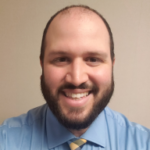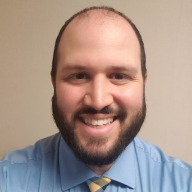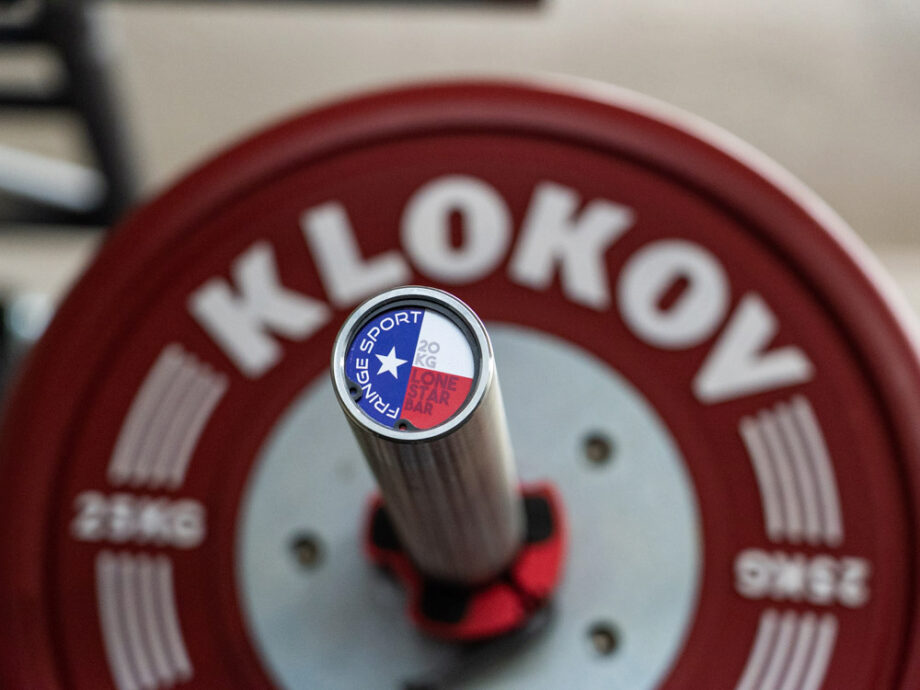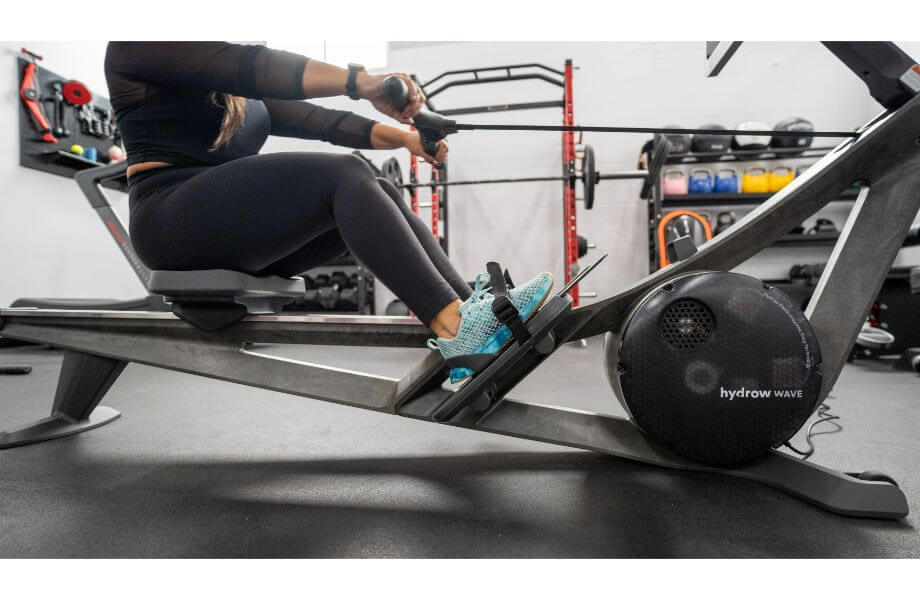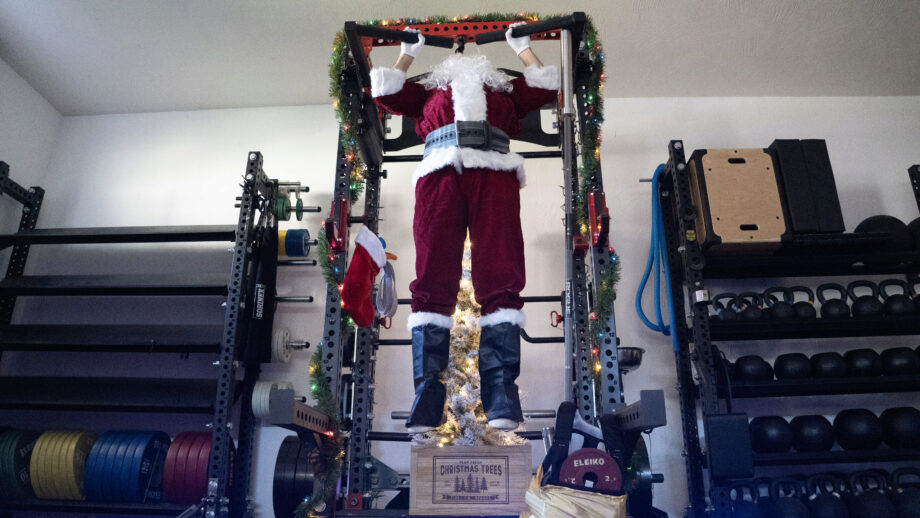Tips and Tricks to Build Strong Legs With Resistance Band Squats
Squats are one of the best and most functional movements in fitness. They’re simple, straightforward, and can be done virtually anywhere with little or no equipment. They’re an incredible exercise for both building strength and improving cardio performance1.
Over time, it may become necessary to graduate from simple bodyweight squats and up the ante. What are our options for increasing the challenge when simply squatting in place isn’t sufficient anymore?
Some folks like heavy free weights like barbells, dumbbells, or kettlebells to target the lower body with more intensity. Free weights are great, but not always practical outside of a commercial gym.
For a much more versatile alternative, resistance bands offer unparalleled convenience and provide great results. They’re inexpensive, easy to use, and add an extra element of challenge to your squats.
How do we squat with resistance bands? Let’s find out!
How to Do a Squat With Resistance Bands
To reap the rewards of a great resistance band workout, you’ll want to know how to use each type of resistance band during your workout.
Banded Squat With Long Looped Resistance Band
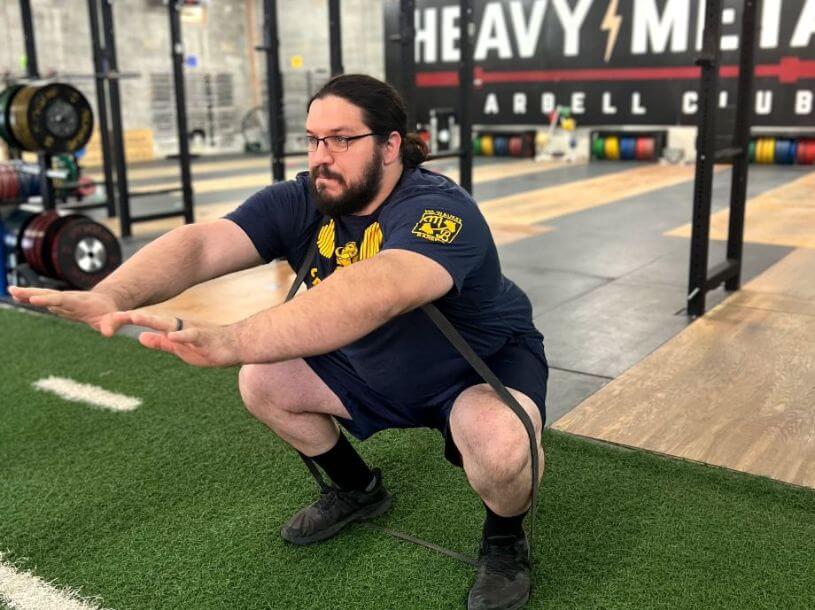
The most basic of banded squat movements is the classic banded squat using a long looped resistance band. This type of band forms one continuous loop and are often sold in sets that include multiple bands, each with a different level of resistance.
Here’s how to perform a banded squat with a long looped resistance band:
- Let one end of your long looped resistance band fall to the floor and step on it with both feet. Your feet should be approximately hip-width apart.
- Secure the top of the band across your upper back and shoulders as you would if you were supporting a barbell for a barbell squat. We recommend securing the band from a crouched position, as there is more tension in the band when you are in the standing position.
- Bring your hips back and lower yourself until your thighs are parallel with the floor. Your knees should form a 90-degree angle at the bottom of the squat. Try to keep your torso as upright as possible.
- Pushing from the heels, stand back up and return to the starting position.
- Repeat as needed.
Make sure the resistance band you choose does not compromise your good form. Avoid hunching forward, rounding your back, or coming up onto your toes during the movement.
Banded Squat With Glute Band (Mini Resistance Band)
Glute bands, or mini loop resistance bands, are notably shorter than their long looped counterparts. They’re designed specifically for lower body and leg workouts.
Here’s how to perform a banded squat with a glute band:
- Assume the standard squat position. Your feet should be slightly wider than shoulder-width apart. You want your weight on your heels, toes pointed outward slightly, and your core held tight.
- Secure the band just above your knees.
- Bring your hips back and lower yourself until your thighs are parallel with the floor. Your knees should form a 90-degree angle at the bottom of the movement and should push outward against the band.
- Pushing from the heels, stand back up, and return to the starting position.
- Repeat as needed.
Squatting with a glute band will target your quadriceps, glutes, and hip adductors more than a bodyweight squat since you’re fighting the resistance by pushing your legs outward.
According to a 2017 study performed by the International Journal of Sports Physical Therapy2, performing banded squats will translate to increased strength during barbell squats as well.
Banded Squat With Free Weights

We know what you’re thinking. If you have free weights to use during a squat, why use the resistance bands too? Shouldn’t you pick one or the other instead of trying to combine both?
For beginners, absolutely. We don’t recommend overcomplicating things if you’re still learning the ropes. For intermediate and advanced fitness enthusiasts, however, combining two different types of resistance provides an incredible workout.
Using a Long Looped Resistance Band
Remember how we looped that big ol’ band around our upper body? Instead, you’re going to want to fasten it directly to the dumbbell.
Here’s how to do a banded squat with a long looped resistance band and a free weight:
- Let your long looped resistance band fall to the floor and step on it with both feet. Your feet should be approximately hip-width apart.
- Hold the dumbbell vertically as you would during a goblet squat and fasten the top of the resistance band around the weight. Make sure it is snug so it does not slip off!
- Bring your hips back and lower yourself until your thighs are parallel with the floor. Your knees should form a 90-degree angle at the bottom of the squat.
- Pushing from the heels, stand back up and return to the starting position.
- Repeat as needed.
Using a Glute Band or Mini Loop Band
The key distinction here is that a mini loop band is safely snug around your quadriceps, and so you may use a dumbbell, kettlebell, or other free weight without adjusting your form.
Be sure the free weight you select is manageable, as you don’t want it to pull you forward and cause hunching, rounding of the back, or force your weight forward so that you’re coming up on your toes.
Always prioritize proper form. If you’re having a hard time, scale to a lower resistance or lower weight so that you can complete all reps perfectly.
What Muscles Do Resistance Band Squats Work?
As with regular squats, resistance band squats build strength in the quads, glutes, and hip adductors. You’ll also feel it in your lower back and core.
Similar to deadlifts, your hamstrings will extend during the movement as well, fighting the resistance of the band and providing activation to this muscle group too.
Benefits of Banded Squats
There are many benefits to using banded squats during your workout.
1. Banded squats use a different type of resistance than free weights.
While bodyweight squats are your basic, no-nonsense, no-equipment movement to hit your lower body during a warm up or a metcon, you’ll need to add in weight or resistance to increase the challenge as you become more proficient.
Free weights are excellent for this, but resistance bands provide a different type of resistance. This type of resistance is called variable resistance, which fluctuates as tension is created on the band, versus a free weight’s constant resistance, which is the same from start to finish.
According to a 2019 meta-analysis in SAGE Open Medicine, indexed by the National Library of Medicine3, using resistance bands promotes similar strength gains to conventional resistance.
To get the best results, we recommend using resistance bands, bodyweight, and free weights rotationally to incorporate activation of various kinds during your regimen.
Related: 8 Surprising Benefits Of Resistance Bands
2. Banded squats use low-profile and inexpensive equipment.
At the gym, the sky’s the limit with what you can get your hands on to squat, lift, or otherwise use in your workouts. For a home workout, however, you may not have the same stuff at your disposal.
Unlike free weights, machines, and cardio equipment, resistance bands often store in a tidy little bag that you can tuck away anywhere. Plus, they’re sold for a fraction of the cost of other fitness equipment.
For these reasons, resistance bands are a shoe-in staple for any home gym setup.
Related: Building A Budget Home Gym From Titan Fitness
What Type of Resistance Bands Should You Use for Squats?
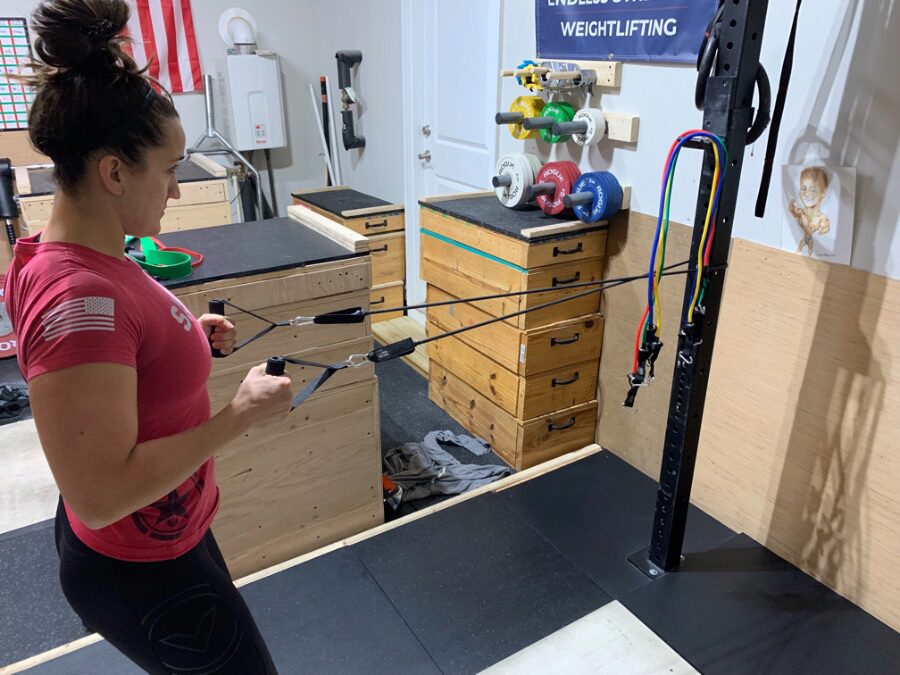
If you’re looking for the best resistance bands for squats, there are certain things to keep in mind when making your selection.
1. Consider the resistance level.
If you’re new to resistance bands, start light or purchase a set that includes different levels of resistance so you can work your way up as you progress.
We recommend Gritin Bands for beginners. They are relatively inexpensive considering the quality and portability, and they come in a set of five color-coded bands of different resistance levels.
2. Consider what kind of squat you’re doing.
For banded squats where the band goes over your shoulders or around a free weight, a glute band won’t cut it. You’ll need a long looped resistance band for banded back squats, goblet squats, or other similar variations.
On the other hand, glute bands are often better for lower body resistance band exercises. We recommend the AmazonBasics Latex Resistance Bands because they’re easy to use, come in a set of five color-coded levels of resistance, and fit easily in any gym bag for use both at home or on the go.
3. Consider the material.
Many resistance bands are made from latex. There’s nothing wrong with that per se, but folks who are adverse or allergic to latex should be cognizant of this reality.
If you don’t want or can’t do latex, consider the Fringe Sports Latex-Free Strength Bands. Not only do they feature a latex-free rubber design, the pack comes with six different bands of varying resistance for use in banded squats and full-body workouts too.
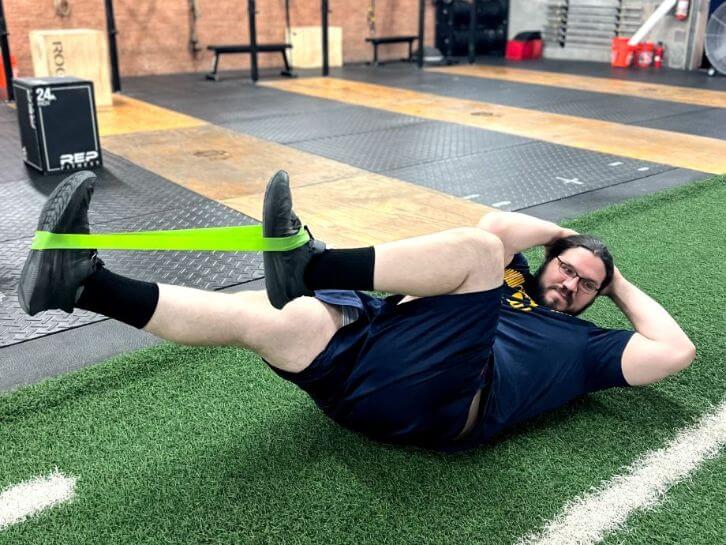
Squats With Resistance Bands: Final Thoughts
Squats are one of the best and most functional exercises for your lower body, and a crucial component of any all-encompassing workout regimen as well.
Doing squats with resistance bands are great because:
- They increase the amount of work performed during the squat.
- They apply resistance differently than free weights.
- They’re excellent for working out at home.
- They help build lower-body strength
- They help improve balance and stability.
Overall, banded squats make an excellent addition to any workout regimen.
Squats With Resistance Bands: Q&A
How do I know if I have the right amount of resistance?
There are two things to keep in mind when “feeling out” what resistance level is right for you:
How it feels. Look for a resistance level that is manageable throughout the set but becomes difficult on the last two or three reps. It should not be easy from start to finish, but it should not immediately feel difficult.
Your form. Check in with your form during each rep. You want a tight core, flat back, and your weight on your heels. If the resistance band is compromising your form in these key areas, select something lighter and focus on perfecting the technique first.
Should I use resistance bands instead of free weights?
Not necessarily.
We recommend that you sometimes use banded squats, sometimes use free weights, and sometimes rely simply on your body weight. The best results often come from incorporating different exercises and resistance types rotationally.
When in doubt, consult a qualified personal trainer for insight on what will work best for your personal goals.
Can I use my resistance bands for other exercises?
Resistance bands make a good addition to any squat exercise, including squat variations like the split squat, sumo squat, pulse squat, but their applications extend far beyond just that.
You can get a great workout for any muscle group including your shoulders, chest, lats, biceps, triceps, and abs too!
Related: The Best Full-Body Resistance Band Workout Exercises
References
1. Haramura M, Takai Y, Yoshimoto T, Yamamoto M, Kanehisa H. Cardiorespiratory and metabolic responses to body mass-based squat exercise in young men. J Physiol Anthropol. 2017;36(1):14. Published 2017 Feb 8. doi:10.1186/s40101-017-0127-9
2. Foley RCA, Bulbrook BD, Button DC, Holmes MWR. EFFECTS OF A BAND LOOP ON LOWER EXTREMITY MUSCLE ACTIVITY AND KINEMATICS DURING THE BARBELL SQUAT. Int J Sports Phys Ther. 2017;12(4):550-559.
3. Lopes JSS, Machado AF, Micheletti JK, de Almeida AC, Cavina AP, Pastre CM. Effects of training with elastic resistance versus conventional resistance on muscular strength: A systematic review and meta-analysis [published correction appears in SAGE Open Med. 2020 Sep 9;8:2050312120961220]. SAGE Open Med. 2019;7:2050312119831116. Published 2019 Feb 19. doi:10.1177/2050312119831116

